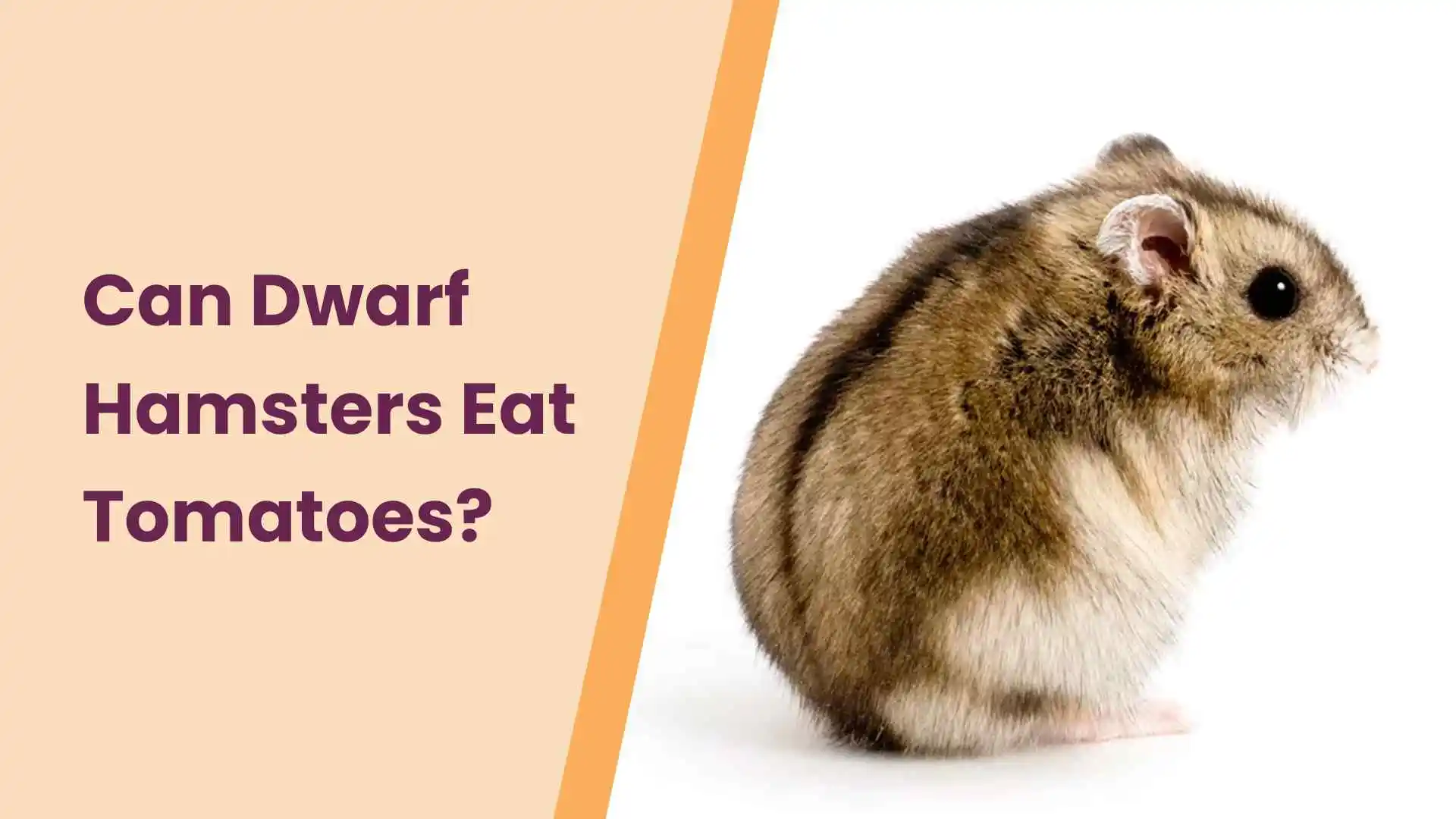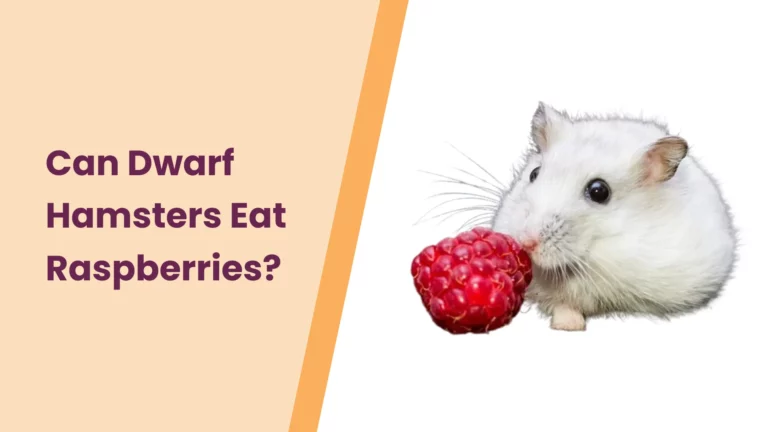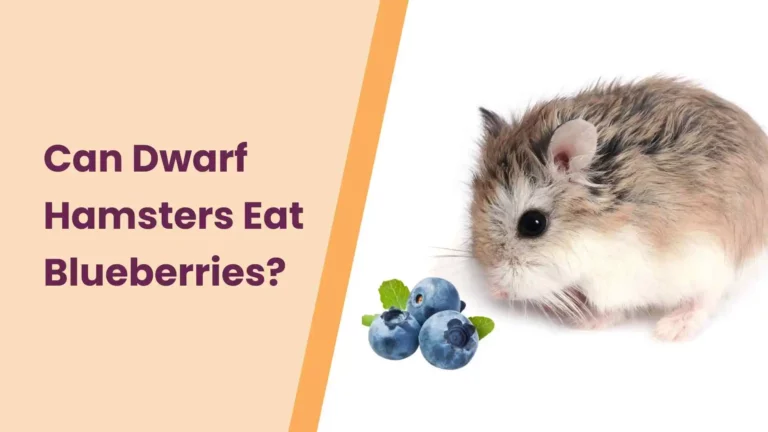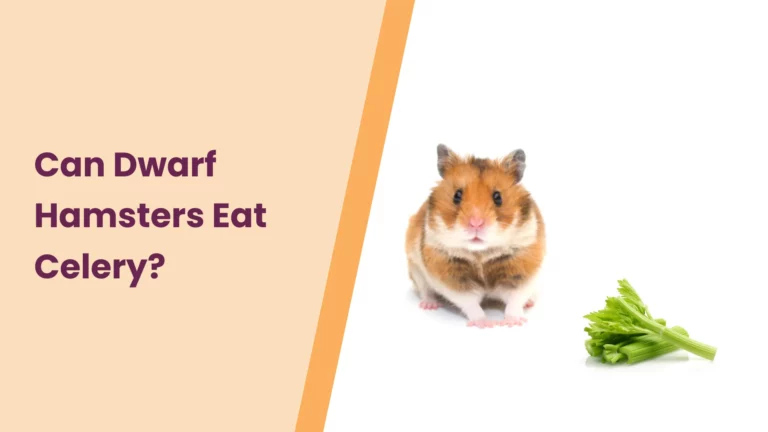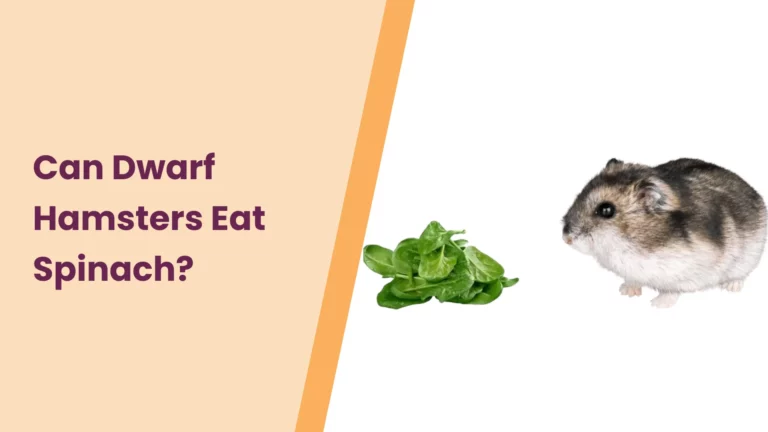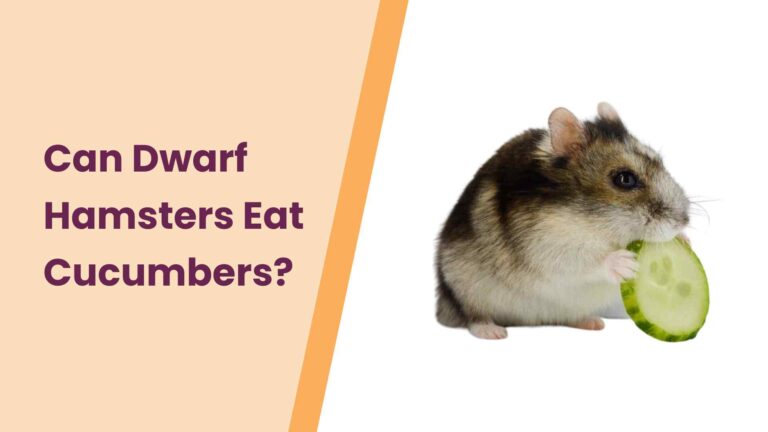Can Dwarf Hamsters Eat Tomatoes? – An Ultimate Guide
Caring for a dwarf hamster is akin to welcoming a tiny, furry friend into your home, one whose well-being depends on you. As dedicated hamster enthusiasts, we often find ourselves pondering over their dietary needs. Today, our culinary quest takes us to the realm of tomatoes.
Can these pint-sized pets relish a nibble of this juicy red fruit? It’s a question that frequents the minds of many hamster owners, alongside concerns about the nutritional implications and possible risks. Fear not, for we’re about to embark on a flavorful journey into the world of dwarf hamster diet and uncover the delightful mystery surrounding their relationship with tomatoes.
So, let’s slice through the intrigue and unearth the truth about this delectable, vitamin-rich delight. Is it a hamster’s dream snack or a potential dietary danger? Let’s find out!
Are Tomatoes safe for Dwarf Hamsters? Unveiling the Tomato’s True Colors
The allure of sharing a tasty tomato morsel with your dwarf hamster is understandable, especially when you consider the vibrant colors and inviting aroma of this fruit. But the pivotal question remains: are tomatoes truly safe for your petite pet?

The Safety of Tomatoes
The short answer is yes, tomatoes can be safe for dwarf hamsters when offered in moderation and with a few precautions. These tiny critters can nibble on small portions of ripe, red tomato without major issues. However, there are essential considerations to keep in mind to ensure your hamster’s safety.
Potential Risks and Concerns
1.High Water Content: Tomatoes have a high water content, which can lead to watery stools in hamsters if consumed in excess. To avoid this, provide tomatoes as an occasional treat rather than a staple in their diet.
2.Tomato Skin and Seeds: While the flesh of the tomato is generally safe, the skin and seeds can pose a choking hazard for hamsters. Always remove the skin and seeds before offering this treat to your furry friend.
3.Acidity: Tomatoes are slightly acidic, and some hamsters might be more sensitive to this acidity than others. If you notice any signs of digestive discomfort, such as diarrhea or stomach upset, it’s wise to limit or discontinue tomato treats.
4.Portion Control: As with any new food in your hamster’s diet, start with a small portion and observe how your hamster reacts. If there are no adverse effects, you can continue to offer tomatoes occasionally.
5.Variety is Key: While tomatoes can be a tasty addition to your hamster’s diet, it’s essential not to rely solely on them for nutrition. A diverse diet that includes a range of hamster-safe foods is crucial to meeting your pet’s dietary needs.
In conclusion, the safety of feeding tomatoes to dwarf hamsters largely hinges on responsible ownership. When offered in moderation, prepared thoughtfully, and monitored closely, tomatoes can be a delightful and nutritious treat for your tiny companion.
Nutritional Value of Tomatoes
Tomatoes, those bright and juicy orbs, hold within them a wealth of nutrition, and their potential health benefits extend beyond the human plate. Understanding the nutritional value of tomatoes is essential when contemplating whether they make a suitable snack for your dwarf hamster.
What’s inside a Tomato?
Vitamins in Tomatoes: Tomatoes are teeming with essential vitamins that can be beneficial to your tiny friend. One notable vitamin found in abundance in tomatoes is vitamin C, a powerful antioxidant known for its immune-boosting properties.
Antioxidants Galore: Beyond vitamins, tomatoes are a rich source of antioxidants, such as lycopene. This antioxidant not only gives tomatoes their vibrant red color but also boasts various health benefits.
The Potential Health Benefits for Hamsters: While it’s important to recognize the nutritional value of tomatoes, especially for the vitamins and antioxidants they contain, it’s crucial to remember that the quantities involved in hamster snacks are tiny.
Health benefits for Dwarf Hamsters
Now, let’s discuss how these nutritional components can benefit your furry friend:
In moderation, the vitamin C and other nutrients in tomatoes may contribute to overall health and vitality in your dwarf hamster. The antioxidants present can help protect their tiny bodies from oxidative stress. Remember that hamsters have unique dietary requirements, and any new food introduced to their diet should be done gradually.
So, if you’ve been curious about whether tomatoes can become a part of your hamster’s culinary repertoire, you’re on the right track. In our journey to understand the compatibility of tomatoes with dwarf hamster diets, we’ll delve deeper into the safety and considerations of serving these delectable fruits to your furry friend. Ready to discover if tomatoes are a ‘pawsitively’ delightful addition to your hamster’s menu? Let’s keep exploring!
How to Feed Tomatoes to Your Hamster: A Guide to Safe and Delightful Dining
So, you’ve decided to introduce tomatoes into your dwarf hamster’s menu – a decision that can add a burst of flavor and nutrition to their diet. But, as with any culinary adventure, there’s a method to the madness. Let’s explore how to safely feed tomatoes to your little friend.
Guidelines for Feeding Tomatoes to Your Hamster
1. Prepare with Care: Before presenting tomatoes to your hamster, it’s crucial to prepare them thoughtfully. Begin by washing the tomato thoroughly to remove any pesticides or contaminants.
2. Watch the Portions: When it comes to portion sizes, less is more for your hamster. Their tiny tummies can’t handle large amounts of tomato, so slice a small, manageable piece to offer as a treat. A single, bite-sized slice is typically sufficient.
3. Frequency Matters: Tomatoes should be an occasional treat rather than a regular part of your hamster’s diet. A slice once or twice a week is usually enough. The key is moderation – too much of any treat, including tomatoes, can lead to digestive issues.
4. Observe Their Reactions: After serving a small piece of tomato to your hamster, monitor their response closely. Watch for any signs of discomfort, such as diarrhea or changes in behavior. Every hamster is unique, so their tolerance for certain foods may vary.
5. Diversify Their Diet: Remember that a varied diet is essential for your dwarf hamster’s overall well-being. Tomatoes can be part of the rotation, but don’t rely on them as the sole treat. Offer a range of hamster-safe fruits and vegetables to ensure a balanced and exciting diet.
6. Freshness is Key: Always serve fresh, ripe tomatoes to your hamster. Overripe or spoiled tomatoes can upset their stomach, so ensure that what you offer is of high quality.
By adhering to these guidelines, you can safely incorporate tomatoes into your hamster’s diet. With careful preparation, portion control, and observation, you’ll make mealtime an enjoyable and nutritious experience for your furry companion.
Dwarf Hamster Diet Basics: Ensuring a Balanced Culinary Canvas for Your Tiny Friend
Picture your dwarf hamster as a miniature gourmand navigating a world of culinary delights in its cozy cage. Much like us, these pint-sized pets have specific dietary needs that deserve our attention. The foundation of hamster care lies in providing a balanced diet, and this culinary canvas should include a mix of various food types to keep your tiny friend healthy and happy.
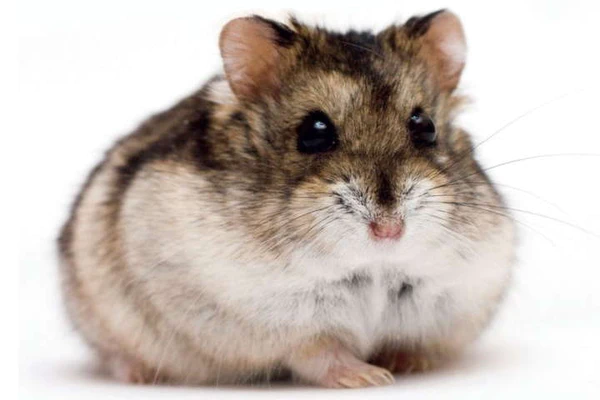
Why is a balanced diet crucial for Dwarf hamsters?
Just like humans, dwarf hamsters require a well-rounded diet to thrive. It’s not enough to merely fill their food dish with a single type of food. A balanced diet ensures they receive a range of essential nutrients, vitamins, and minerals that keep their little bodies ticking like well-oiled machines. A diet that covers all the bases contributes to a hamster’s overall health, longevity, and happiness.
What foods are generally safe for Dwarf hamsters?
Safe Food Types for Dwarf Hamsters: Dwarf hamsters are omnivores, meaning they can eat a variety of foods. In the wild, their diet includes a mix of seeds, grains, insects, and the occasional plant matter. When it comes to domestic dwarf hamsters, it’s important to mimic this diversity in their diet. Safe food types typically include:
1. Commercial Hamster Pellets: Specially formulated hamster food pellets are designed to meet their nutritional needs. These should make up a significant portion of your hamster’s diet.
2. Fresh Vegetables: Offer a variety of fresh, washed vegetables like carrots, cucumbers, and lettuce. These add crucial vitamins and fiber to their diet.
3. Fruits: While a delicious treat, fruits should be given sparingly due to their higher sugar content. Tiny portions of apple, pear, or a slice of tomato can be a delightful addition.
4. Protein: Hamsters need protein for muscle maintenance and overall health. This can be provided through mealworms, crickets, or even a small amount of cooked, unseasoned chicken.
By diversifying your hamster’s menu with these safe food types, you’re ensuring that they receive a balanced diet that caters to their unique dietary needs. However, when it comes to introducing new foods, especially fruits and vegetables, it’s essential to do so gradually, observing how your little companion responds to each addition.
Other Safe Treats for Dwarf Hamsters
While tomatoes can be a tasty treat for your dwarf hamster, it’s important to diversify their diet to keep them both nutritionally fulfilled and mentally engaged. Here’s a medley of safe and delightful options to complement or substitute for tomatoes:
1. Carrots: These crunchy orange delights are a favorite among hamsters. Carrots are rich in vitamin A and fiber, promoting healthy skin and digestion. Slice a small piece into hamster-friendly portions.
2. Cucumbers: Fresh cucumber slices offer a refreshing and hydrating treat for your hamster. They’re low in calories and contain essential nutrients, making them a guilt-free snack.
3. Apples: Just like the saying goes, “an apple a day keeps the doctor away.” Apples provide essential vitamins and a touch of sweetness. Ensure you remove seeds and core, then offer a small, peeled slice.
4. Broccoli: This nutritious cruciferous veggie is packed with vitamins and minerals, making it a healthy choice for your hamster. Provide a small floret to nibble on.
5. Mealworms: For a protein-packed snack, consider dried mealworms. They’re excellent for muscle maintenance and an interesting treat for your hamster.
6. Pumpkin Seeds: Roasted, unsalted pumpkin seeds can be an enticing option. They’re a good source of healthy fats and can serve as a fun, interactive treat.
7. Dandelion Leaves: Fresh dandelion leaves are safe and enjoyable for hamsters. They’re packed with essential nutrients and can be a unique addition to their diet.
8. Blueberries: These tiny, antioxidant-rich blueberries can be a delightful and healthful option when offered in moderation. Provide one or two as a special treat.
9. Safe Herbs: Hamsters often enjoy fresh herbs like parsley, cilantro, and basil. These herbs can add variety to their diet and offer essential nutrients.
10. Commercial Hamster Treats: Specially formulated hamster treats and chews are designed to meet their nutritional needs while providing mental stimulation.
Remember the Golden Rule: Variety is Vital! Offering a diverse range of treats alongside your hamster’s regular diet ensures they receive a broad spectrum of nutrients. Moreover, it keeps mealtime exciting and engaging for your tiny friend.
So, while tomatoes can indeed be a delightful treat, don’t hesitate to experiment with other hamster-approved options. The key is to keep their diet balanced, exciting, and safe. As we wrap up our exploration of treats for dwarf hamsters, you’ll be equipped to create a captivating culinary journey for your beloved pet. Let’s continue our quest for the perfect menu!
Conclusion
In our quest to understand the compatibility of tomatoes with your dwarf hamster’s diet, we’ve unveiled essential insights and guidelines. So, can dwarf hamsters eat tomatoes? Yes, they can, but with care. Tomatoes, with their abundance of vitamins and antioxidants, can be a delightful addition to your hamster’s menu when offered in moderation and thoughtfully prepared. Remember, moderation is the cornerstone of responsible feeding.
Keep portion sizes small, introduce new foods gradually, and monitor your hamster’s reactions closely. The safety of tomatoes for your furry friend depends on your diligence in removing seeds and skin, watching for digestive issues, and offering a diverse diet that caters to their unique nutritional needs.
Dwarf hamsters deserve a balanced and exciting culinary journey. While tomatoes are a tasty option, don’t hesitate to diversify their diet with other safe and nutritious treats like carrots, cucumbers, or apples. The key is to provide a medley of flavors and nutrients that keep them healthy, happy, and mentally stimulated.
“We hope this article has been a valuable guide in your journey of caring for your dwarf hamster. Your thoughts, experiences, and questions are invaluable to our growing hamster care community. If you’ve got insights to share or queries that need answers, we’d love to hear from you!
Feel free to drop a comment below, sharing your own experiences with tomatoes and any other tasty treats your furry friend enjoys. Your stories can provide valuable insights for fellow hamster enthusiasts. And, if you found this information helpful, why not spread the joy?
Share this post on your favorite social media platforms, helping other hamster owners discover the secrets of a happy, healthy hamster diet. Together, we can create a vibrant hub of knowledge and support for the wonderful world of dwarf hamster care!” – Hamsterpit.

